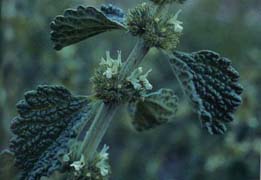our place Open Hillside
Open Hillside
Size: 20x30 feet rectangular shape with irregular edges.
Topography: Flat at top and bottom with a approx. 35 degree slope.
Exposure: approx. 4-5 hours of afternoon sun.
Soil: Higher elevation texture sandy, lighter soil, good drainage. Lower elevation clay texture darker, firm, and poor drainage. Our finding's leave us with the impression that that during the rainy season, the bottom of slope area has a wetland habitat due to the dramatic slope facing the east side, meeting with a slight slope facing west. Also contributing to our evidence is the abundance of growing horsetails located in the the moister site area.
Water Features: Seasonal wetland appearance created at bottom of slope.
Main plant species:
Ground cover: Trailing Blackberry Rubus ursinus is conquering upper elevation and some lower elevation needs to be pruned back heavily, Common Horstail Equisetum arvense for mid to lower elevation of site horsetail covers majority of area leaving no space for other plants to flourish.
Shrubs/Trees: Vine Maple Acer circinatum abundent in high elevation 3-8 ft not thriving due to over crowding, Red-oiser Dogwood Cornus stolinifera 7-8 ft,for the west side of slope this is dominat plant, seeming to be in good health, Red Huckleberry Vaccinium parvifolium may also be suffering from over crowding, Salal Gaultheria shallon plant in good health not overgrowing, Stinging Nettle Urtica dioica quite abundant but not taking over in lower elevation.
Animal activity: Other than sight of birds, no evidence of animal activity has been found.
Feeling about the sight: The area is quite diverse. Even though it is such a small area, the two areas of the sight seem to be quite opposite. One side seeming dry and higher elevation, carrying within it diffrent plants, and characteristics, and the other sider more wet , dark and seperate plant species. This variation that occurs in such a small space is quite ouststanding, and surprising to find. We would like to note that it has been suggested that mushrooms might be a good thing to introduce to this area.
Important information about Riparian areas
Riparian Hillsides serve a variety of purposes both for the habitat environment, and the wild life that thrives in the environment. Trees and shrubs along side stream banks create a buffer for the wildlife for basic needs, of rest, eating and protection. Trees and shrubs create a buffer for the stream by providing shade to control the temperature of the water and control the stream bank by helping prevent erosion. Organic matter and woody debris filter into the stream from surrounding area to give more beneficial nutrients.
Riparian areas often have a large diversity of plant life. The greater diversity of plant communities surrounding a stream bank creates greater vitality for the stream and the inhabitants around them. Canopy plants such as Willow, Red Alder, Western Red Cedar, Douglas Fir, and under story plants such as Sword Fern, Nootka Rose, Salmonberry, and Snowberry, are examples of what some one might find along Washington riparian areas.
At this current time the Longhouse Garden Riparian Hillside has limited examples to fulfill the viewer’s eye, a complete story of a Riparian Habitat. It is our hope that in the future as communities, students and ourselves work together on the Long house Garden, this riparian area can come to full bloom.
